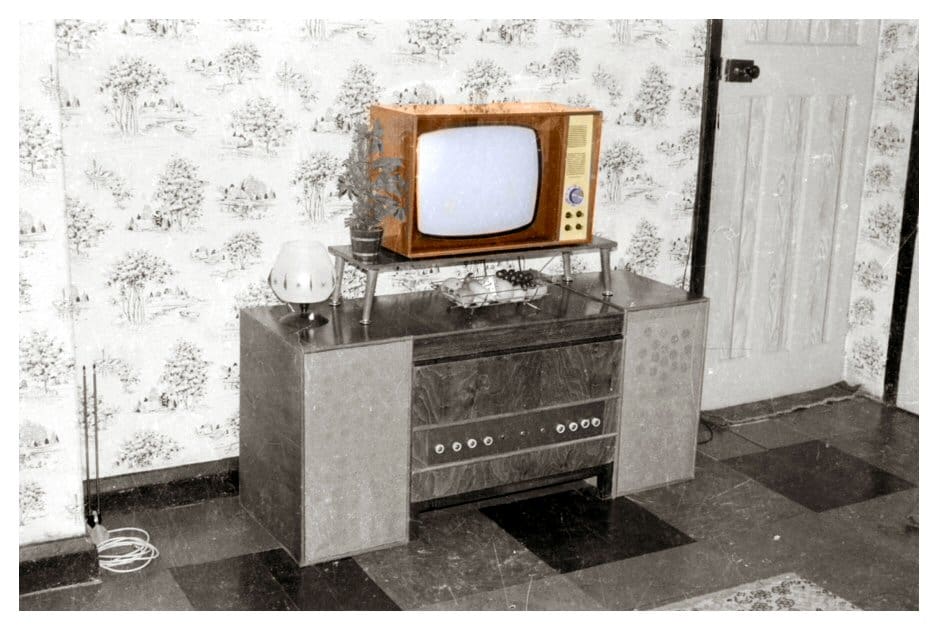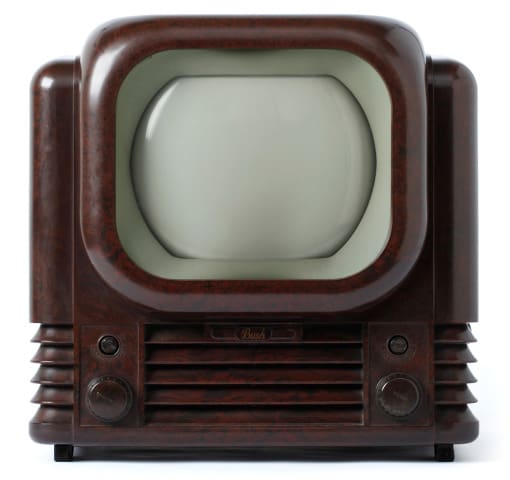Television spread fast throughout American, British, and German households in the 1950s. Many brands of televisions were sold, although some were clearly more well-liked than others. Here, we’ll take a look back at the most well-known TV manufacturers of the ’50s and analyze what made them so successful, including their specs, aesthetics, and price points.

In the 1950s, RCA was the most widely sold television brand in the United States. RCA was famous for their dependable and fashionable television sets. When it came to televisions, the RCA Victor brand was highly sought after due to its sophisticated appearance. These TVs were offered in a number of different hues, including black, white, and wood-grain styles. Furthermore, RCA sets were well-known for their huge screen sizes, which typically ranged from 15 to 21 inches. In the 1950s, the average price of an RCA television was between $200 and $600, which was rather a lot for a household purchase. In spite of the expensive price, many families were able to purchase a television set because the demand for them was rising rapidly.
“1950s TV Set” by hartman045 is licensed under CC BY 2.0.
When it came to televisions in the 1950s, Pye was the clear frontrunner in the United Kingdom. Pye was widely recognized as a producer of trustworthy, reasonably priced televisions. Pye televisions were especially well-liked due to their timeless elegance.

These television sets were available in a rainbow of hues, from vibrant primary colors to classic black and white. Small screen sizes (often between 9 and 12 inches) were another hallmark of Pye TVs. In the 1950s, a Pye television cost between £50 and £150, a price that many people could afford. Despite the price drop, not all British households could afford a TV because the demand for the medium was lower than in the United States and the country was still rebuilding after World War II.

In the 1950s, Telefunken was the most widely sold television brand in Germany. In the television industry, Telefunken was well-known for making sets that were both dependable and fashionable. The Telefunken brand of televisions was especially well-liked due to its sophisticated appearance. These TVs were offered in a number of different hues, including black, white, and wood-grain styles. Televisions manufactured by Telefunken were also notable for their huge screen sizes, which typically ranged from 15 to 21 inches. In the 1950s, a high-end Telefunken television set would set you back anything from DM 1000 to DM 2500. In spite of the expensive price, many families were able to purchase a television set because the demand for them was rising rapidly.
“Bush TV22, TV by Bush, 1950” by thngs.co is licensed under CC BY 2.0.
In the 1950s, most people watched black-and-white TVs due to technological limitations. Although color televisions had been introduced in the 1950s, their high price and limited availability made them a luxury item rather than a household need. In 1951, the first color television broadcasts aired in the United States, but it wasn’t until the 1960s that color televisions were widely available and inexpensive.

Finally, in the 1950s, the most widely used television brands in the United States were RCA, followed by Pye in the United Kingdom, and Telefunken in Germany. Those manufacturers had a reputation for making sturdy, aesthetically pleasing TVs. Although there were some color televisions in the 1950s, black and white models predominated. Although many families could afford a television even at the high price it commanded in the 1950s, the medium was nevertheless widely available. Color televisions had been around for a while as technology advanced, but it wasn’t until the 1960s that they became widely available and affordable to the average consumer.




